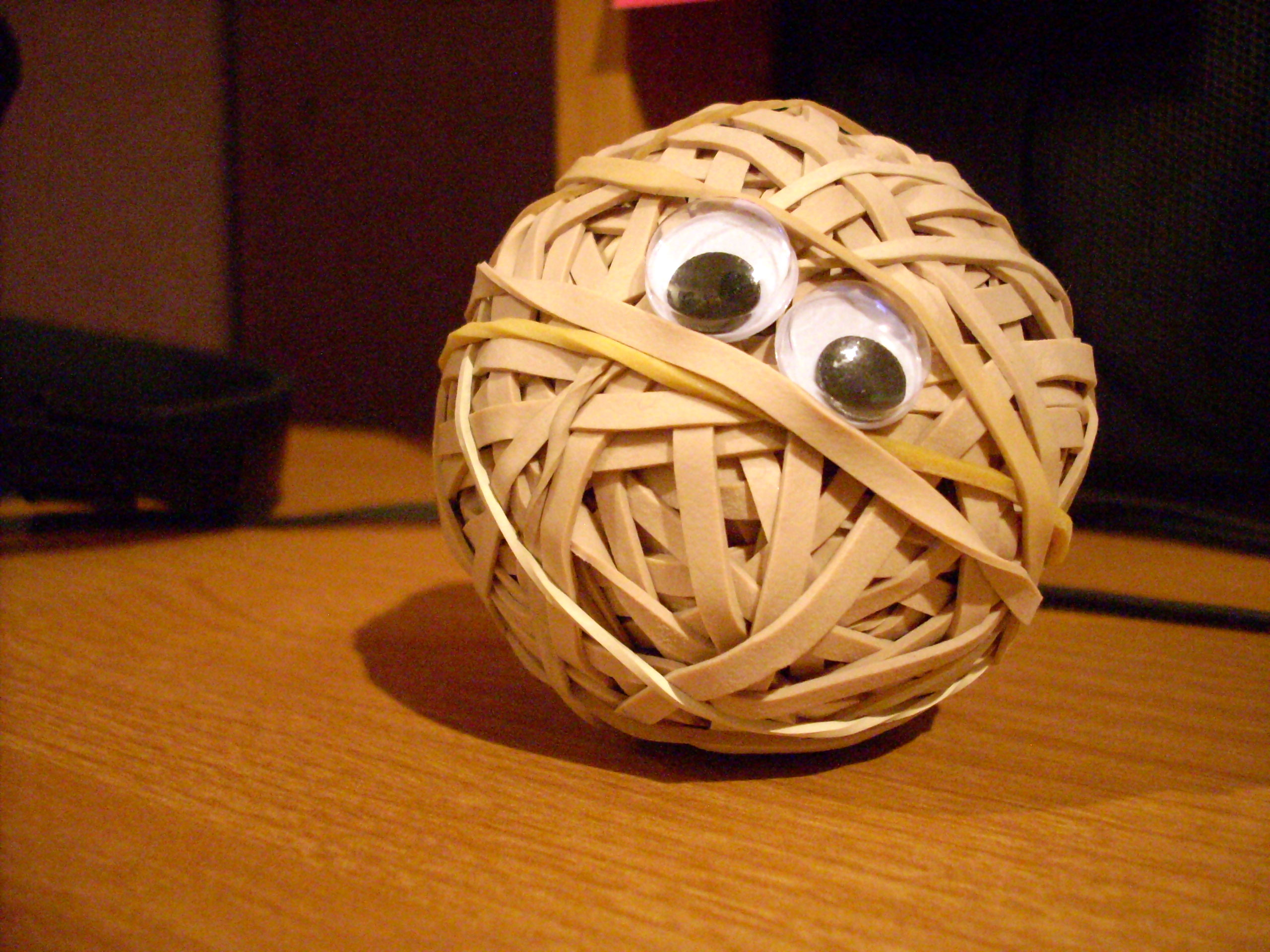To be honest, completing the predicate for the phrase "A learner is like a..." was not an easy task, especially after reading about Connectivisim from the article, Connectivism: A Learning Theory for the Digital Age, a seemingly postmodern concept. My goal was to pick something that was flexible and limitless. While rubber band balls have physical and theoretical limitations, I feel they can offer a relatively clear analogy for a fairly complex theory [at least in my head].
The foundation for this analogy is rooted in the quote, "Computer networks, power grids, and social networks all function on the simple principle that people, groups, systems, nodes, entities can be connected to create an integrated whole. Alterations within the network have ripple effects on the whole" (Siemens, 2001). Therefore, think of the rubber bands as new knowledge. The ball expands as it acquires more information, a direct concept. The knowledge becomes layered and interwoven in a complicated interrelated manner, representative of the schema or a mental network. This messy compilation of rubber bands symbolizes the connections that we make everyday. If new information is acquired that clashes with previous knowledge, it requires a shift in one's overall thinking. Therefore, that knowledge or rubber band, would need to be removed, which would require the removal of a link(s) and the reconstruction of the schema.
One of the essential ideas behind Connectivism is that knowledge is growing and evolving at a rapid rate, which requires us to constantly expand and alter our way of thinking. George Siemens states, "If I'm not continually learning, I'm becoming obsolete in my particular field or within a particular knowledge space...A network continually evolves and continually re-forms itself. So when I talk about the network as the learning, I'm essentially referring to that construct that we as individuals make that enables us to stay current and to continue to learn" in the video The Network is the Learning (3:14 min.). While the conception of the network that Siemens refers to extends beyond the individual, the rubber band ball symbolizes the learner's acquisition of new information. As the ball grows, it becomes stronger. As we are exposed to current and relevant information, we become more powerful and are able to make greater societal contributions.
The one limitation of this analogy that I struggled with is that rubber band balls are fairly individual entities that do not connect. Due to the crucial role that sharing plays in Connectivism, I would like to pretend for all intensive purposes that rubber band balls are interactive and have the potential to 'connect' and share bands or information.
Image from: http://iamnotagoodartist.com/wp-content/uploads/2009/08/googly_ball.jpg

2 comments:
You have explained your choice of analogy very well, but since you also want to express the connectivity of the individual learner, why not think of the rubber band ball as the network with each learner being a rubber band. That way all the bands are interconnected but each forms a part of the network. What do you think?
Great suggestion! I think I was limiting myself because of the word learner. I think 'learners are like...' would better fit your idea and the analogy. Thank you!
Post a Comment